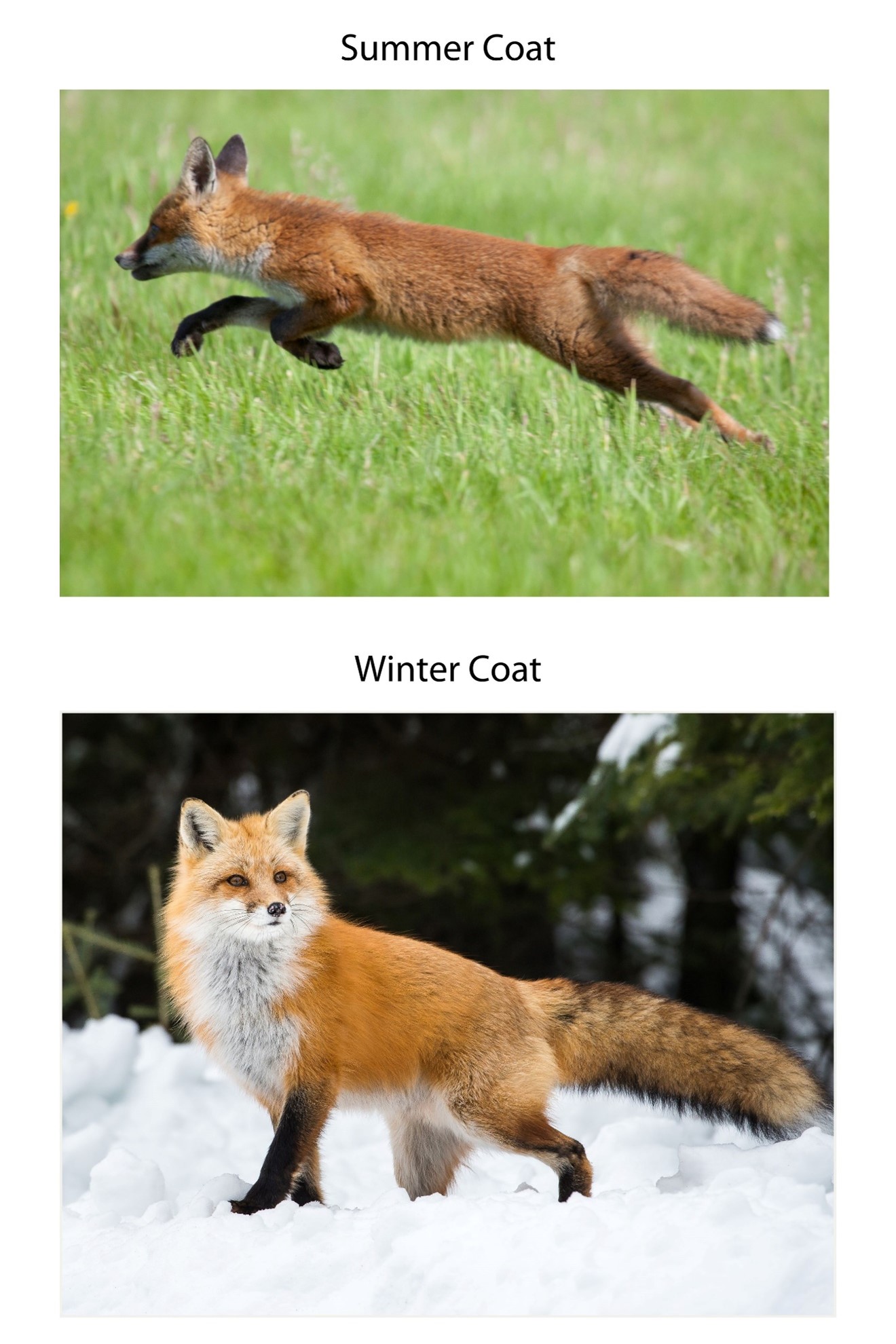Preparing for Winter: Wildlife Style
Humans utilize fire, insulated homes, and the use of energy sources to produce heat and stay warm during cold months. While some animals will (secretly) join humans in their warm houses, most wildlife must find a way to survive on their own. Let’s examine a few strategies for surviving winter and what that means for fall activity.
A Nice Warm Coat
Many species of mammals and birds will either change color or grow a thicker coat designed to aid winter survivorship. Winter plumage in birds is usually quite dull compared to the bright mating colors you see in the spring and summer. This dull color intentionally makes the bird less noticeable and less of a target by hungry predators. Thicker mammal coats do exactly what you’d expect them to do, insulate the animal from the cold. Foxes, white-tailed deer, raccoons and many other mammals use this strategy to help them stay safe, warm, and active during the winter. In fall, keep an eye out for animals that are transitioning to their winter outfits.
Fill those Pantries
As you would if you thought food was soon going to be scarce, some mammals such as mice and squirrels start stocking up on resources. In fall, food from oak, hickory, and walnut trees are plentiful for squirrels and are perfect for caching for later. These caches are usually in the ground; a single squirrel can bury up to 3,000 nuts in one season and usually has hundreds to thousands of stashes. In fact, oak trees intentionally produce an overabundance of acorns with the hopes that squirrels will hide them in the ground but forget their hiding spot, essentially planting them. It’s thought that squirrels fail to recover around 75% of the food they store.
Add some Fat
Sometimes it’s not food an animal stocks up on, but fat stores. In preparation for scarce food and few feeding opportunities, some animals go into winter with plenty of stored energy to spare. Your mind probably goes straight to bears for this one, but actually lots of animals do this including bats, bumblebees, groundhogs, and even snakes. Usually, animals that build fat stores also undergo some form of hibernation, where bodily processes are slowed down. Survival depends on whether you put on enough weight in the fall or not.
There are many more strategies for surviving winter found throughout the animal kingdom that aren’t listed here. For now, get outside and enjoy fall before the cold sets in. Keep an eye out for animals preparing for winter and see if you can identify what strategies they are using to survive.
By Amy Keigher, Natural Resources Agent, 2024
Return to Natural Resources Agent Articles page